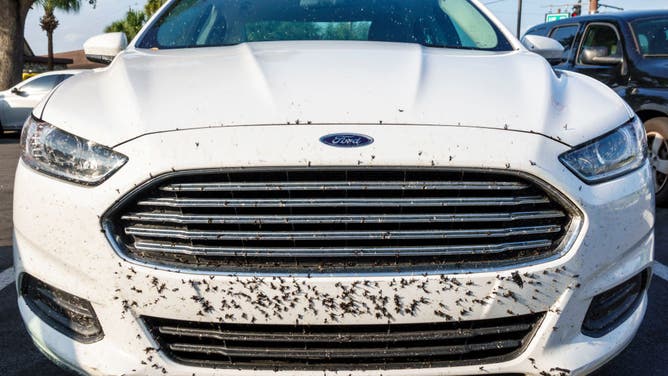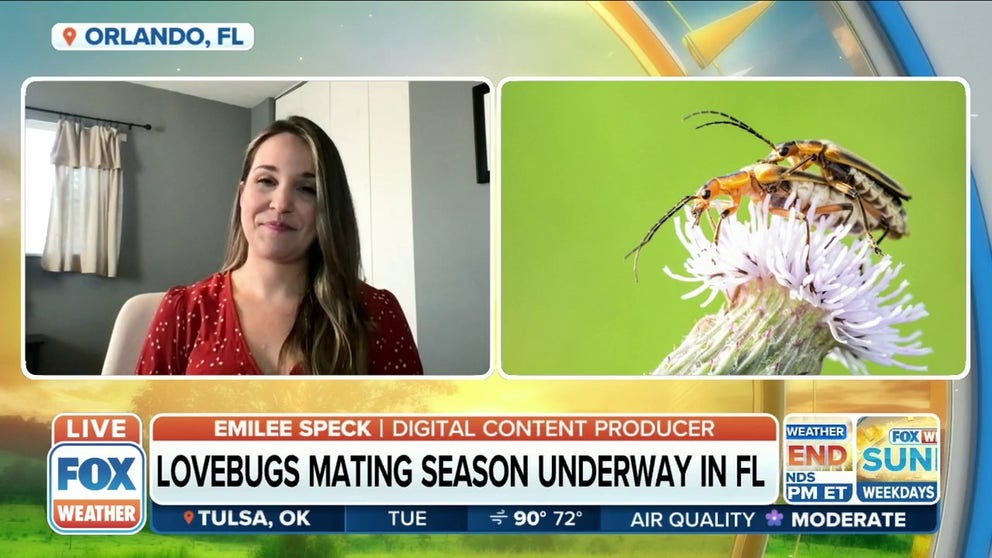Lovebug season: When the most annoying couple of all time returns
Lovebugs get a bad rap for mating season but during the rest of the year they help the environment
Lovebug mating season is underway in Florida
Peak mating season happens in May and September, but the insects will be visible throughout the summer months.
Temperatures heating up in the South in April and May provide the queue for lovebugs to take to the air and find a mate at their favorite date night spots: highways.
Lovebugs, also known as Plecia nearctica Hardy, were first discovered in the U.S. in Galveston, Texas, in 1940, according to the University of Florida's Institute of Food and Agricultural Sciences. Lovebugs are also found in other Gulf Coast states from Louisiana, Mississippi, Alabama, Florida and as far north as South Carolina.
Not long after the bugs were discovered, they became a Florida problem, first collected in the western Florida panhandle in 1949 and then found throughout Florida by 1974, according to UF.
FAA, AIRLINES WORK TO IMPROVE GRIDLOCK IN SKIES OVER FLORIDA
There has been a long-running rumor that lovebugs were created to combat mosquitoes in Florida. However, UF has squashed that falsehood many times. UF entomologists didn't start studying the bug until it was established in Florida.
"I started hearing this story in 1979, my first year as an entomologist in Florida, but other entomologists told me they heard the same story long before that," UF IFAS entomologist Thomas Fasulo said in 2004. "How it got started, we just don't know."
Entomologists say lovebugs are harmless to humans and help break down decaying vegetation and create new soil despite the annoyance they create.
Car fumes and lovebugs: A love story

A Ford Fusion in Florida covered in lovebugs.(Photo by: Jeffrey Greenberg/Education Images/Universal Images Group via Getty Images)
(Getty Images)
Cars covered in the black-and-red bugs are usually a good sign the mating frenzy is underway.
Lovebugs congregate near highways because they are attracted to automobile exhaust fumes from diesel and gas, particularly between 10 a.m. and 4 p.m. when temperatures are over 82 degrees.
Besides being annoying, the acidic bug juice (ew) can be nasty for your car paint. After a drive on the highway, car owners should wash the bug guts off within about 24 hours to avoid damage to their paint.
FLORIDA ANNOUNCES $30 MILLION IN FUNDING FOR MANATEE RESCUE, HABITAT RESTORATION PROGRAMS
Here’s a tip: Spay down the areas of your car covered in lovebug remains with warm soapy water and let it soak for five minutes. After you spray it down, the bug splatter should come off a little easier as you wash your car.
They'll be back
Adult Lovebugs live long enough to do one thing: make more lovebugs. Female flies mate, eat and then lay between 100 and 350 eggs, a lifecycle that lasts only a few days.
Male lovebugs look for a hearty female mate in a swarm and grab on. This is where lovebugs get their name because they are commonly in pairs amid a mating session. According to UF, a new couple finds some plants to rest and finish their mating.
There are two generations of lovebugs a year in spring and fall.
Peak mating season happens in May and September, but the insects will be visible throughout the summer months.
